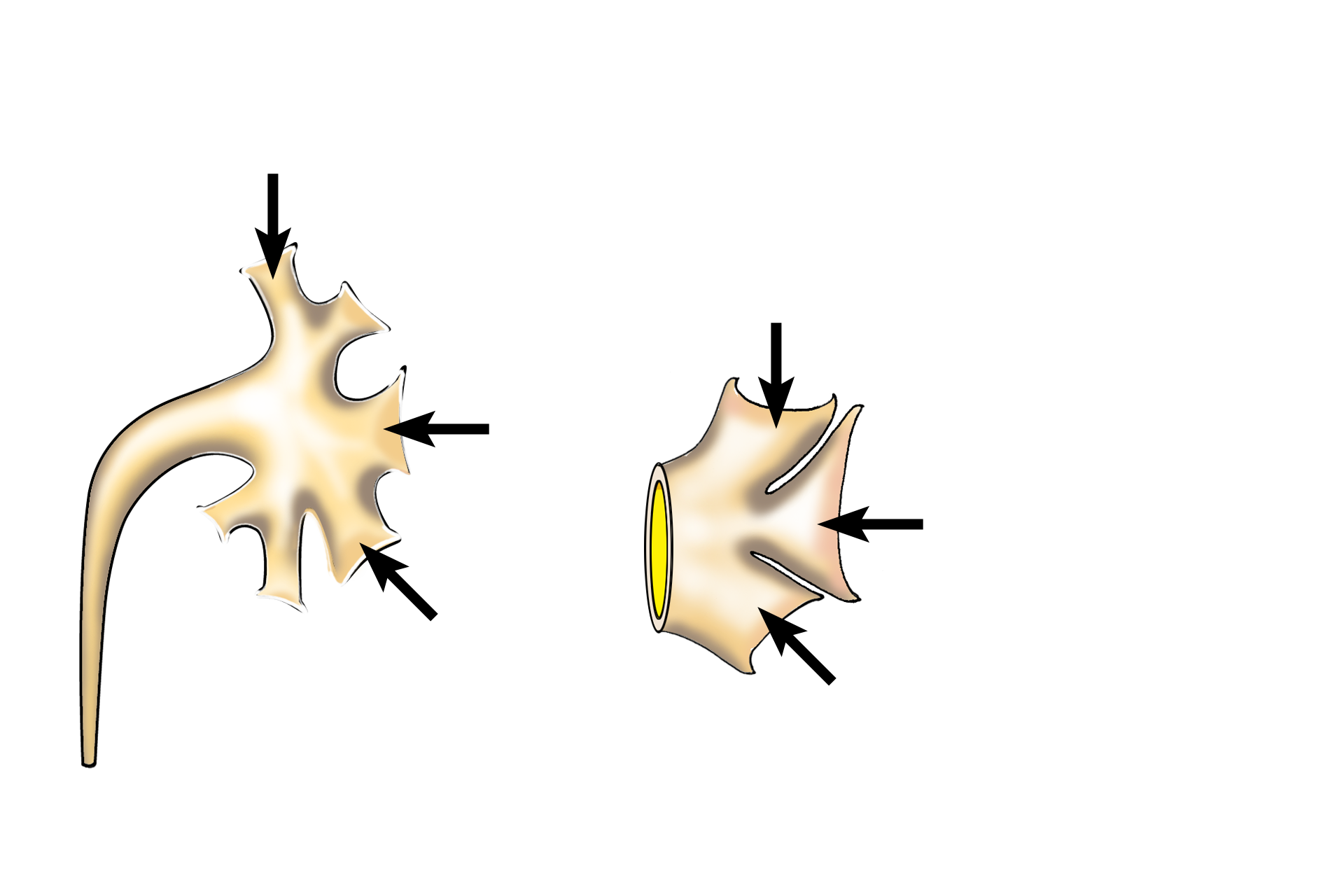
Kidney
An illustration and a low-magnification image demonstrate the features of the kidney. The outer edge and capsule of the kidney are on the right side of each image. 10x

Micrograph >
The outline on the illustration demonstrates the location of the tissue in the micrograph on the right.

Cortex >
The cortex forms the outer rim of the kidney. Although not readily visible at this magnification, the cortex can be subdivided into alternating, radially oriented bands called the convoluted portions and the medullary rays.

Medulla >
The medulla forms the inner portion of the kidney. It is composed of renal pyramids, whose bases abut the cortex, and renal columns, i.e., cortical tissue interposed between the pyramids.

- Renal pyramid
The medulla forms the inner portion of the kidney. It is composed of renal pyramids, whose bases abut the cortex, and renal columns, i.e., cortical tissue interposed between the pyramids.

- Renal columns
The medulla forms the inner portion of the kidney. It is composed of renal pyramids, whose bases abut the cortex, and renal columns, i.e., cortical tissue interposed between the pyramids.

Lobe >
A lobe of the kidney is a conical shaped structure, consisting of a renal pyramid, half of the renal column flanking the pyramid, and the overlying cortex.

Renal sinus >
The renal sinus, located at the indented hilum of the kidney, is filled with loose connective tissue and adipose cells. The excretory passageways are located within the sinus.

Excretory passages >
Several excretory passages are illustrated. Minor calyces surround the apices (papillae) of medullary pyramids. Major calyces are formed by the union of several minor calyces. Two to three major calyces unite to form the enlarged renal pelvis which continues as the ureter.

- Minor calyces
Several excretory passages are illustrated. Minor calyces surround the apices (papillae) of medullary pyramids. Major calyces are formed by the union of several minor calyces. Two to three major calyces unite to form the enlarged renal pelvis which continues as the ureter.

- Major calyces
Several excretory passages are illustrated. Minor calyces surround the apices (papillae) of medullary pyramids. Major calyces are formed by the union of several minor calyces. Two to three major calyces unite to form the enlarged renal pelvis which continues as the ureter.

- Renal pelvis
Several excretory passages are illustrated. Minor calyces surround the apices (papillae) of medullary pyramids. Major calyces are formed by the union of several minor calyces. Two to three major calyces unite to form the enlarged renal pelvis which continues as the ureter.

- Ureter
Several excretory passages are illustrated. Minor calyces surround the apices (papillae) of medullary pyramids. Major calyces are formed by the union of several minor calyces. Two to three major calyces unite to form the enlarged renal pelvis which continues as the ureter.

Arterial supply >
The arterial supply to the kidney is substantial and complex. The renal artery, a branch of the abdominal aorta, enters at the hilum of the kidney. The renal artery supplies the interlobar, arcuate and interlobular arteries, in that order.

- Renal artery >
When the renal artery enters the kidney, it branches into interlobar arteries, which travel between the pyramids through the renal columns. These arteries branch laterally to form the arcuate vessels that mark the boundary between cortex and medulla. Interlobular arteries leave the arcuates to enter the convoluted portions of the cortex.

- Interlobar artery
When the renal artery enters the kidney, it branches into interlobar arteries, which travel between the pyramids through the renal columns. These arteries branch laterally to form the arcuate vessels that mark the boundary between cortex and medulla. Interlobular arteries leave the arcuates to enter the convoluted portions of the cortex.

- Arcuate artery
When the renal artery enters the kidney, it branches into interlobar arteries, which travel between the pyramids through the renal columns. These arteries branch laterally to form the arcuate vessels that mark the boundary between cortex and medulla. Interlobular arteries leave the arcuates to enter the convoluted portions of the cortex.

- Interlobular artery
When the renal artery enters the kidney, it branches into interlobar arteries, which travel between the pyramids through the renal columns. These arteries branch laterally to form the arcuate vessels that mark the boundary between cortex and medulla. Interlobular arteries leave the arcuates to enter the convoluted portions of the cortex.